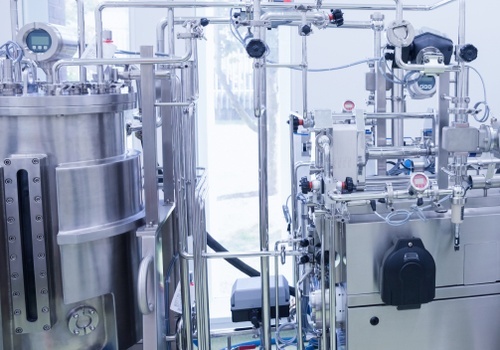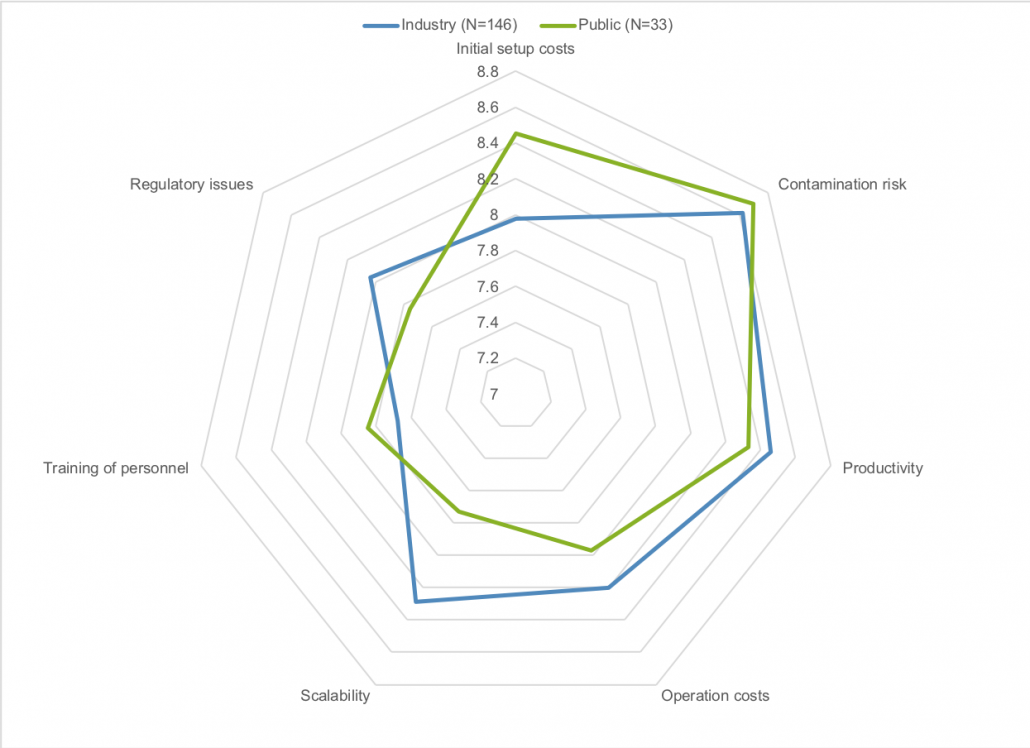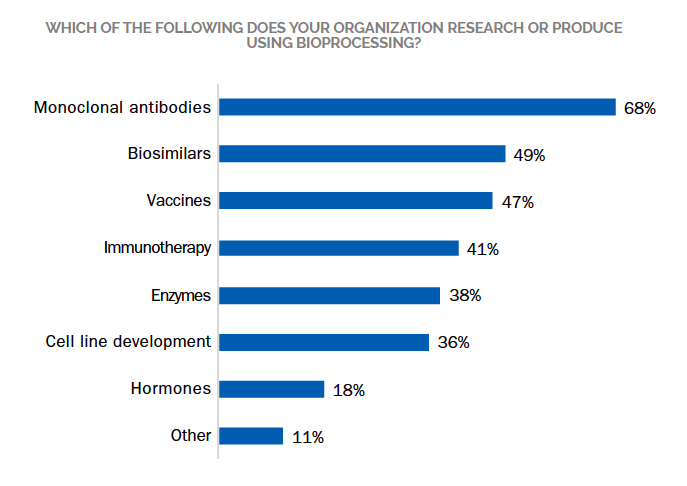Bioprocessing Trends: Regional and Market Segment Insights
Our first two articles reviewed the current state of the Bioprocessing Industry by observing the advancements and trends from a technology and end-market perspective. Here we will take a look at the industry from a regional, sector, and end-user perspective.
As North America and Europe are the most established regional markets for bioprocessing, combined they make up nearly 75% of the global market. Both regions will see strong demand growth driven by the growing biologics-based therapeutic market. Many of our end-users reported that biologics will make up significant portions of their pipeline in the near future. Yet, despite the concentration of this market in American and Europe, our analysts found that China will see the strongest growth in demand over the next five years, as Chinese biopharma scientists believe that the region’s bioprocessing-based research will be vastly increasing in the near future: its demand driven by the production of biosimilars which undergo a separate FDA approval process. While generic drugs are chemically synthesized using their branded counterparts as reference, biosimilars are generated from complex living material using biologics as their reference.
In addition to regional segmentation of demand and growth, our analysts also examined this growing market by sector. Considering the driving forces of the market, it’s reasonable that pharma/biotech contributed to nearly 80% of the market demand in 2017 and will continue to expand. Our surveyed scientists reported that monoclonal antibodies were the most used bioprocessing product within this sector, which also holds true of the overall bioprocessing market followed by biosimilars and vaccines.
Interestingly, immunotherapy production was much more prominent among our respondents from North America than other regions. Over the next five years, demand from the applied sector — which accounts for bioprocessing use in the agriculture, food, and beverage industries — will increase significantly, coming in second to pharma/bio. As government regulations for standardization of food and improved food safety have become more stringent, this forecasted increase in demand is appropriately reflected.
In previous articles, we’ve discussed the importance of continuous processing. Our analysts further surveyed researchers to determine the current landscape of continuous processing as well as the shift towards its implementation for either or both upstream and downstream processes. For instance, contamination risk and productivity were some of the most important considerations in transitioning to continuous processing in both the industrial and public sectors. However, initial set-up costs were more of a concern for the public sector, while scalability was a bigger concern for the industrial sector.
Despite growing quickly over the past years, this market and the products available within it still have much development to undergo, and there is still room for plenty of healthy growth. Our new report, 2018 Bioprocessing Market Analysis and Perspectives, examines the overall market and dissects the industry by specific types of technologies. For a full table of contents and more information, please download our complementary brochure or contact us directly.






